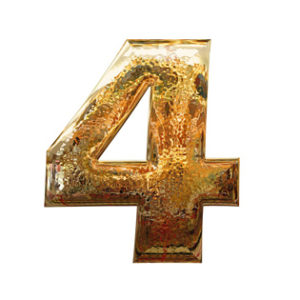 All marketers know the 80-20 rule that tells us 80% of sales come from 20% of a business’ customers, but research from Epsilon and Wylei Research has introduced us to the 50-20 principle, which tells us that 50% of sales come from 20% of a brand’s customer base known as brand loyalists.
All marketers know the 80-20 rule that tells us 80% of sales come from 20% of a business’ customers, but research from Epsilon and Wylei Research has introduced us to the 50-20 principle, which tells us that 50% of sales come from 20% of a brand’s customer base known as brand loyalists.
According to the study of U.S. consumers, brand loyalists consider price but they also consider a variety of other factors to determine their personal valuation of a brand’s product or service (e.g., availability, convenience, quality, etc.). As an industry gets more competitive, these “other” factors become more important in the purchase decision-making process, particularly if perceived value is low.
This is evident in the data provided in the Get to Know Your Loyalists report from Epsilon and Wylei Research, which shows the following percentages of U.S. consumers who claim to be loyal to the six retail sectors included in the survey:
- Financial service providers: 53% of consumers are brand loyalists
- Grocery retailers: 47% of consumers are brand loyalists
- Insurance: 43% of consumers are brand loyalists
- Travel: 36% of consumers are brand loyalists
- Clothing retailers: 34% of consumers are brand loyalists
- Consumer packaged goods: 29% of consumers are brand loyalists
The research also found that more than one in two brand loyalists are women (52%). These brand loyalists have above average household incomes and are between the ages of 35-54. This demographic profile of the majority of brand loyalists is the same for five of the six retail sectors studied. Only the retail sector varied. According to the study, most brand loyalists in the retail sector are still women with above average household incomes, but they are a bit younger (18-34 years old).
The report provides some insights as to why brand loyalty is more prevalent in some industries than others. For example, the financial services industry is one where consumers don’t often switch products or brands. It’s too much of a hassle to switch and often fees are incurred. On the other hand, the retail grocery industry often builds loyalty through specific loyalty programs. At the same time, consumers become accustomed to the location, store layout, and product selection at their preferred grocery stores. Again, switching to a new store is a hassle.
On the other hand, highly competitive industries see lower levels of brand loyalty. For example, despite having many loyalty programs, the travel industry has only 36% brand loyalty. Both the retail clothing industry and the consumer packaged goods industry are highly competitive with many options for consumers to choose substitutes. Switching is easy and the rewards often outweigh the negatives.
Consider your consumers’ loyalty to your brand. Is it as strong as you think it is?
Image: Jesse Victor
Susan Gunelius is the author of 10 marketing, social media, branding, copywriting, and technology books, and she is President & CEO of KeySplash Creative, Inc., a marketing communications company. She also owns Women on Business, an award-wining blog for business women. She is a featured columnist for Entrepreneur.com and Forbes.com, and her marketing-related articles have appeared on websites such as MSNBC.com, BusinessWeek.com, TodayShow.com, and more.
She has over 20 years of experience in the marketing field having spent the first decade of her career directing marketing programs for some of the largest companies in the world, including divisions of AT&T and HSBC. Today, her clients include large and small companies around the world and household brands like Citigroup, Cox Communications, Intuit, and more. Susan is frequently interviewed about marketing and branding by television, radio, print, and online media organizations, and she speaks about these topics at events around the world. You can connect with her on Twitter, Facebook, LinkedIn, or Google+.



I believe percieve quality is an important aspect in building quality rather than price, in attaining a repeat purchase consumers have to believe in the quality accorded to them after getting their attention.